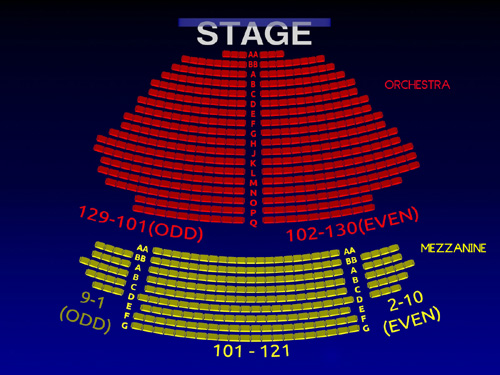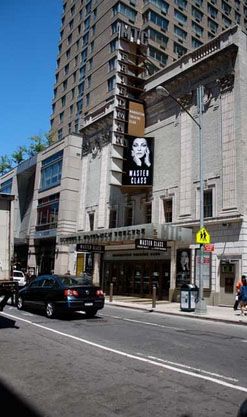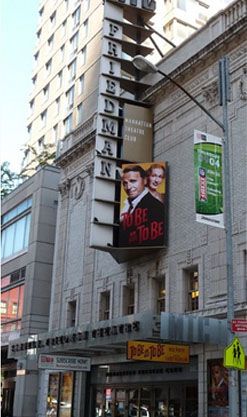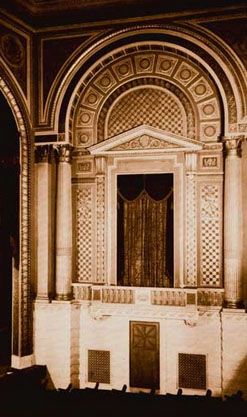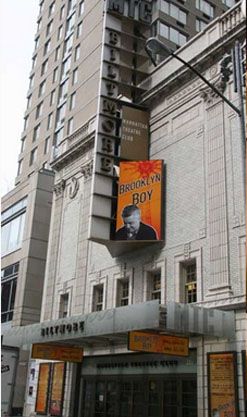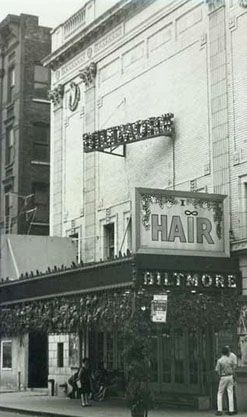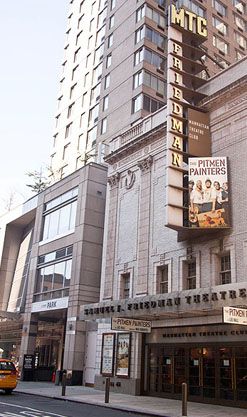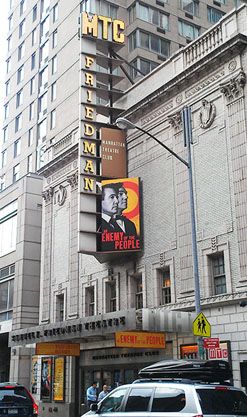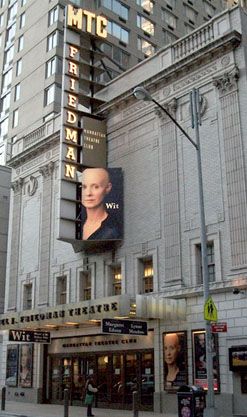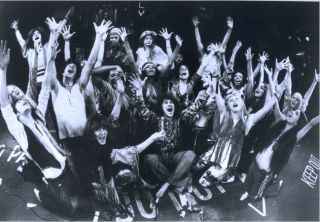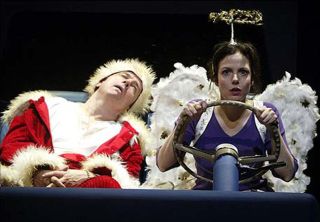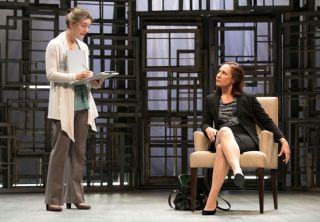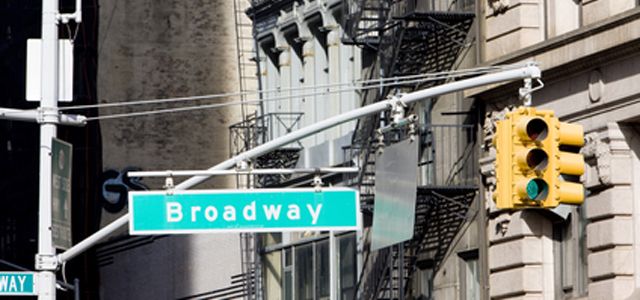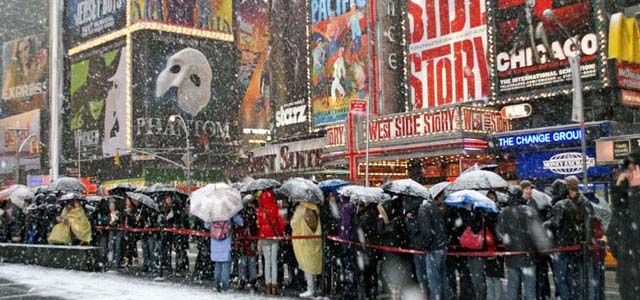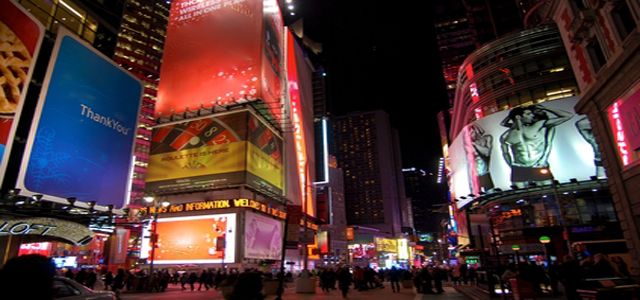The Samuel J. Friedman Theatre
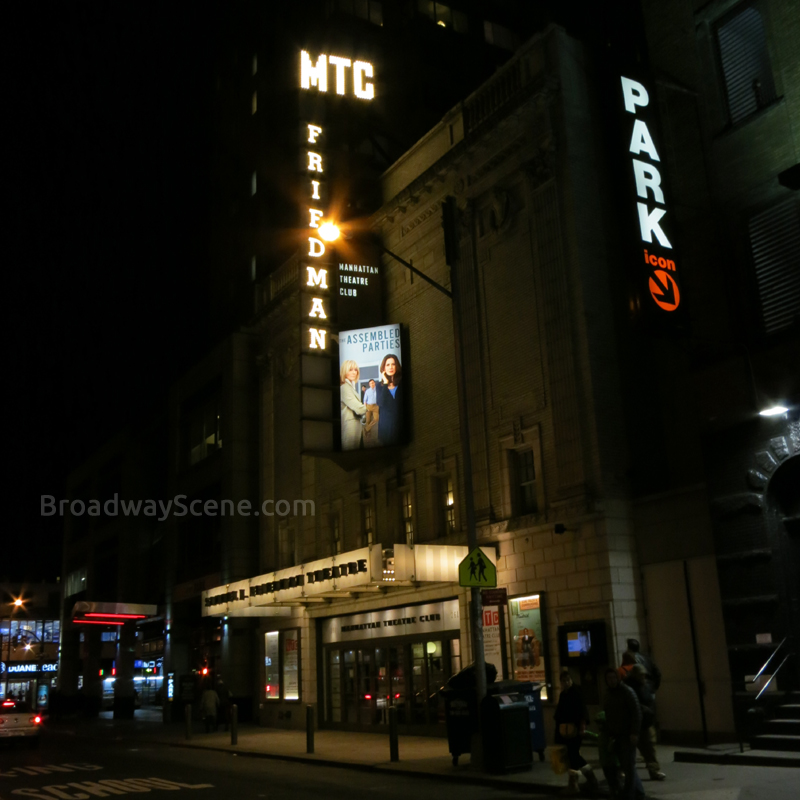 The Samuel J. Friedman Theatre, originally known as the Biltmore, opened on December 7, 1925. It was built for the Chanin Brothers, construction industrialists who entered the showbiz world in the 1920s. The Biltmore was their second project. Over the years, the Biltmore became a symbol of the increasing decay in New York City, but the restored Samuel J. Friedman remains a symbol of New York’s dedication to the theatre.
The Samuel J. Friedman Theatre, originally known as the Biltmore, opened on December 7, 1925. It was built for the Chanin Brothers, construction industrialists who entered the showbiz world in the 1920s. The Biltmore was their second project. Over the years, the Biltmore became a symbol of the increasing decay in New York City, but the restored Samuel J. Friedman remains a symbol of New York’s dedication to the theatre.
History of the Theatre
On December 7, 1925, the first production at the Biltmore, the Owen Davis farce called Easy Come Easy Go, opened. In 1927, The Barker, starring Walter Huston, played at the theatre, and it was a popular success. On New Year’s Day of 1934, after several flops, the Biltmore finally saw a triumphant comedy, Big Hearted Herbert featuring J.C. Nugent.
In the 1930s during the Depression, the Chanin Brothers lost all six of their Broadway houses, including the Biltmore. The theatre was used by Federal Theatre Project’s Living Newspaper series in 1936. The Federal Theatre Project (FTP) was part of the New Deal during the Great Depression and was created to sponsor theatre and other live creative performances in the United States. The FTP’s main goal was to hire artists who were out of work with the resulting goal of entertaining impoverished families and fashioning appropriate art. Living Newspapers were plays written by research teams. These playwrights clipped articles from newspapers about current events which were transformed into plays aimed at informing audiences; the plays usually had reformist themes and focused on important issues.
The Biltmore was next used as a studio for Warner Brothers before housing George Abbott’s smash hit production of Brother Rat in 1936. The energetic cast starred Jose’ Ferrer, Ezra Stone, Eddie Albert, and Frank Albertson. George Abbott’s production of Clifford Goldsmith’s What a Life (a comedy once again starring Ezra Stone) was another profitable production for the theatre. The cast also included Betty Field, Edith Van Cleve, Eddie Bracken, Joyce Arling, and Butterfly McQueen.
From 1952 until 1961, the Biltmore was used as a radio and television studio by CBS. The innovative rock musical Hair opened at the theatre in 1968 and ran for 1,750 performances. There was a fire at the Biltmore in 1987, destroying the venue’s interior. After the fire, the theatre sat abandoned for fourteen years. Between 1987 and 2001, the building changed owners numerous times. Most plans aimed for its use in the future were prohibited because it was labeled a New York City landmark and could only function as a legitimate Broadway theatre if refurbished.
The Manhattan Theatre Club bought the theatre in 2001. In October 2003, after major refurbishments, the theatre re-opened. On September 4, 2008, the theatre was renamed the Samuel J. Friedman in honor of the publicist.
A Small, but Modern Theatre
The Samuel J. Friedman Theatre was designed by Herbert J. Krapp. At that time, it was one of Broadway’s smaller houses, with a seating capacity of 903. It was originally designed with a balcony, and a color scheme of brown and crimson. In 2001, the remains of the original theatre were restored, and missing portions were rebuilt. The new theatre has a seating capacity of 622, which is much smaller than the former house, and it includes contemporary elements such as meeting rooms and elevators. The Biltmore’s significant structures (the dome, the second-floor gallery, the proscenium arch, and staircases) were replicated and renovated.
A Bright Light on Broadway
The Samuel J. Friedman Theatre stood as a run-down wreck on 47th Street for the majority of its life, and it epitomized New York City’s deterioration. Its renovation, featuring an outdoor television screen displaying news about the Manhattan Theatre Club and a modern-day marquee, has made The Great White Way a little brighter.

